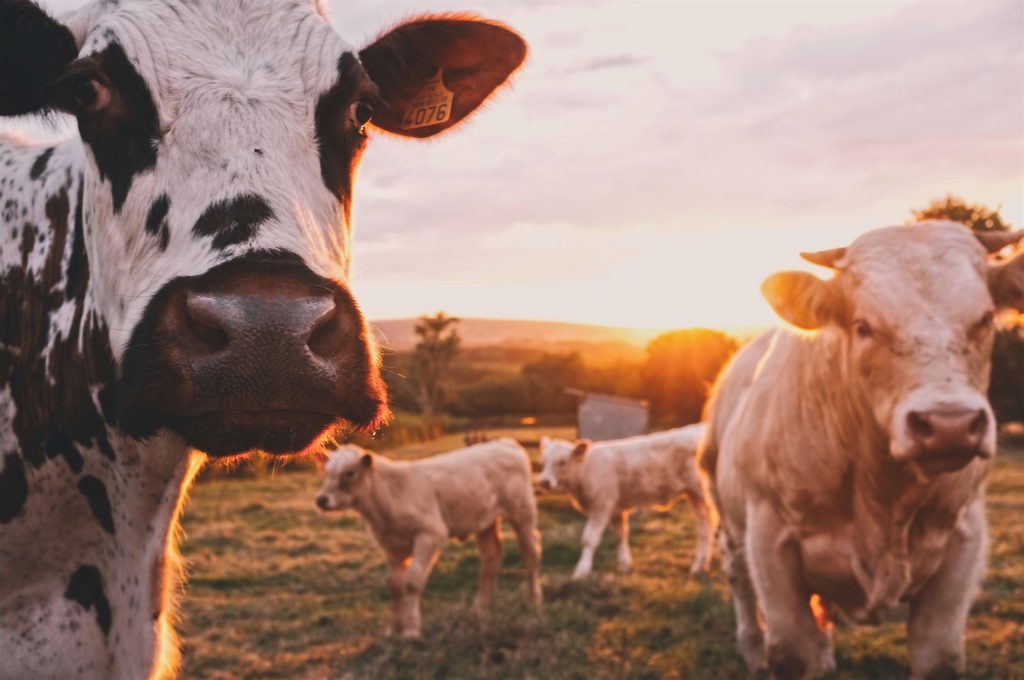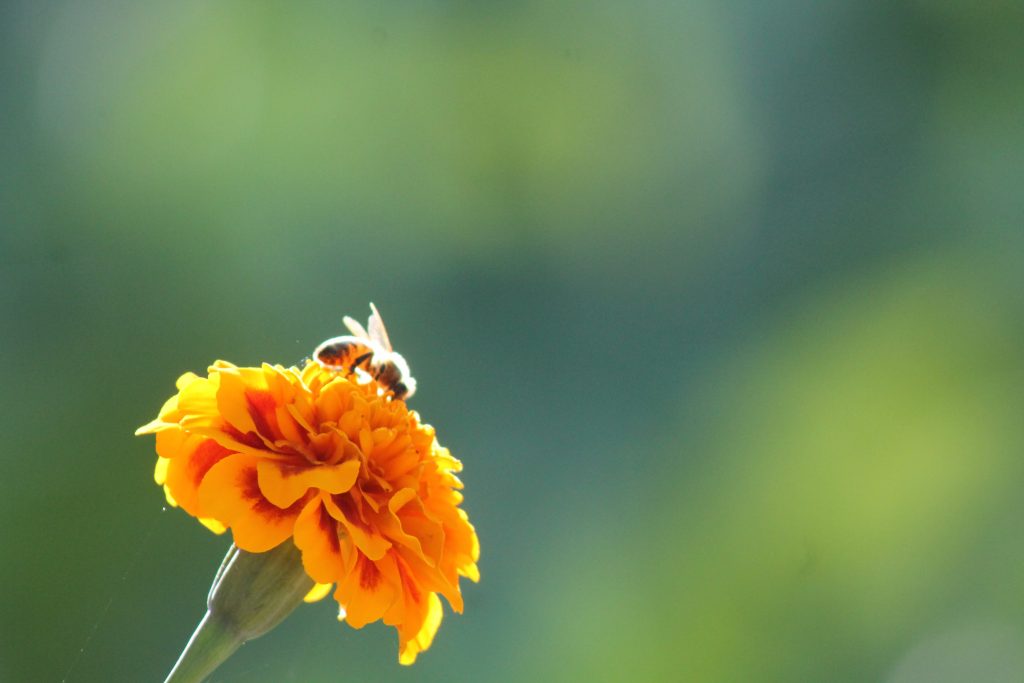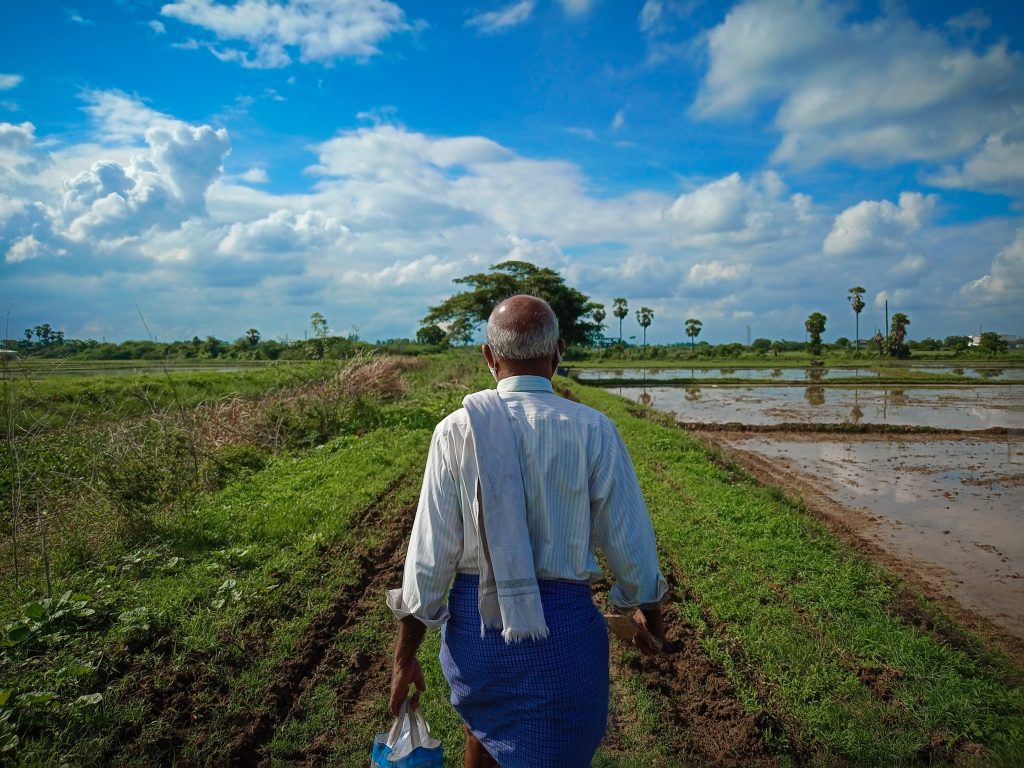During the field visit, 18 EFFECT partners and invited stakeholders had an opportunity to learn about the practices and management of agro-environmental schemes (AES) in the context of collective agreements in the province of Friesland, the Netherlands. The day started with a visit to the farm of Gerke Jilt Veenstra. He is part of the Noardlike Fryske Walden collective, whose offices we visited later in the day where we had presentations from the collective and from the Ministry explaining the Dutch collective approach.
Morning session: Farm visit
Gerke Jily Veenstra lives and manages a farm that has its origin in the 1800s when it was constructed as a church farm. Nowadays, he focuses mainly on livestock farming and dairy production. In addition, he actively promotes social farming in his community and he’s a keen member of the Noardlike Fryske Walden Farmers’ Association. This is one of the oldest regional farmer collectives, which support farmers in the uptake and monitoring of AES.
To introduce us to the local environmental-political context, Mr Veenstra highlighted two issues that have a significant effect on local agriculture:
- firstly, in the last couple of years, farmers’ protests have erupted across the Netherlands. This is due to new legislative measures to decrease nitrogen levels in the water and soil of grass strips surrounding fields, especially if they are near NATURE 2000-designated areas. To maintain the new set levels, animal husbandry production would need to be halved. As livestock farming is the main focus of nearly all farms in the Netherlands, the new measures will have a significant impact on the agricultural sector as a whole and the livelihoods of rural communities as well.
- Secondly, another long-term issue that local farmers struggle with (and the solution is unclear) is the sinking fields due to climate change and the consequential rise in sea level, as all the local fields have been built on the former seabed and sand soils.
After the warm welcome in his home, Mr Veenstra showed us his stables, livestock and fields. As a farmer who applies various practices within agro-environmental schemes, he presented some of the areas where these practices were successful, especially in proximity to the canals and wetlands.
Afternoon session: Noardlike Fryske Walden and the agrarian policy supporting regional farmers collectives
In the Netherlands, the Agro-environmental schemes (AES) are managed by 40 regional farmer collectives, which operate over 114 000 hectares in AES status. Together they form a semi-governmental body called Farmers&Nature, which started as a bottom-up collective approach. It’s the individual collectives that conclude AES contracts with farmers and are therefore also responsible for managing the offer of AES practices and their monitoring. In this way, the farmers’ collectives ease the legislative procedures for the farmers and make the state less saturated with otherwise thousands of individual contracts. It also has a positive social effect on local communities.
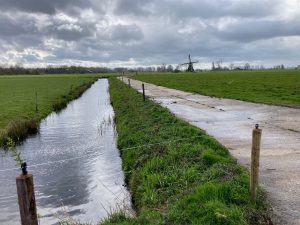
Noardlike Fryske Walden (NFW) represents one such collective. It gathers 800 members, where 600 of them are farmers, with 60 000 hectares, representing 80% of all the farmers in the region (five municipalities). NFW thus operates 4500 ha in AES status. The members of the collective can participate in the decision-making through general meetings and theme groups and affiliated associations with various focuses (e.g. environmental, water management, etc.). There is a regional meeting once a year with all various parties, while theme groups are held at least 4 times a year.
The management of AES in the Netherlands is relatively decentralised. Firstly, the NFW applies for a budget from the province, which issues a decision for the next 6 years and consists of 65% of CAP payments and 35% of regional funding. The collective received annual payments at the end of the year and then it pays the individual farmers. Currently, NFW operates at around €5.5 million, of which 18% goes on its overheads and 2% for additional projects. Nationally, 45 different AES measures are offered, and each collective can decide which ones they will be presenting, based on their local context and needs, as an offer to farmers. The price per ha is decided on the national level, nevertheless, the government and the collective can decide to pay a lower amount if justified and voted on at the General Meeting.
The application of AES by the NFW follows a mosaic circular structure: the centre of the area under the AES is dedicated to wetlands, surrounded by areas of annual rest. The outer surrounding ring is then dedicated to herb-rich areas and extensive grazing. As the local landscape is highly uniform, without forests, this structure is easily followed. As hedgerows and ponds have been part of the local traditional landscape and continue to be maintained through a special policy strategy, it has been declared a National Landscape Area.
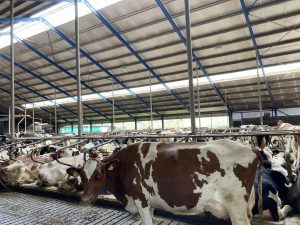
In addition to managing contracts with individual farmers, the NFW is also responsible for monitoring the application of AES measures. In their local context, this is done through the monitoring of nests, and breeding pairs of birds and insects, and it is based on volunteers in cooperation with various other associations. There are internal checks too; however, these are based on a positive approach and recommendations for the farmer, rather than punishment. If a farmer hasn’t fulfilled all the obligations as set in the AES measure, the NFW may not necessarily impose a fine – it depends on the farmer’s mitigating circumstances such as weather conditions.
There is also a strong sense of community in NFW. Even though membership in one of the farmer collectives is obligatory for the farmers, in NFW, new members are brought in through individual contact campaigns, social media or word of mouth from other farmers. As knowledge sharing is one of the obligations for the collectives too, there are regular meetings, training and knowledge exchange events for the farmers. According to the NFW and Mr Veenstra, 70% of the farmers involved in AES are intrinsically motivated, where the positive example of the neighbouring farmers encourages more farmers to collaborate. In addition, there is close cooperation between NFW and local citizens and businesses, where farmers can get extra incentivised by private companies if they meet a certain environmental goal.
Photos and article by Sarka Hajtmarova from CTFC
